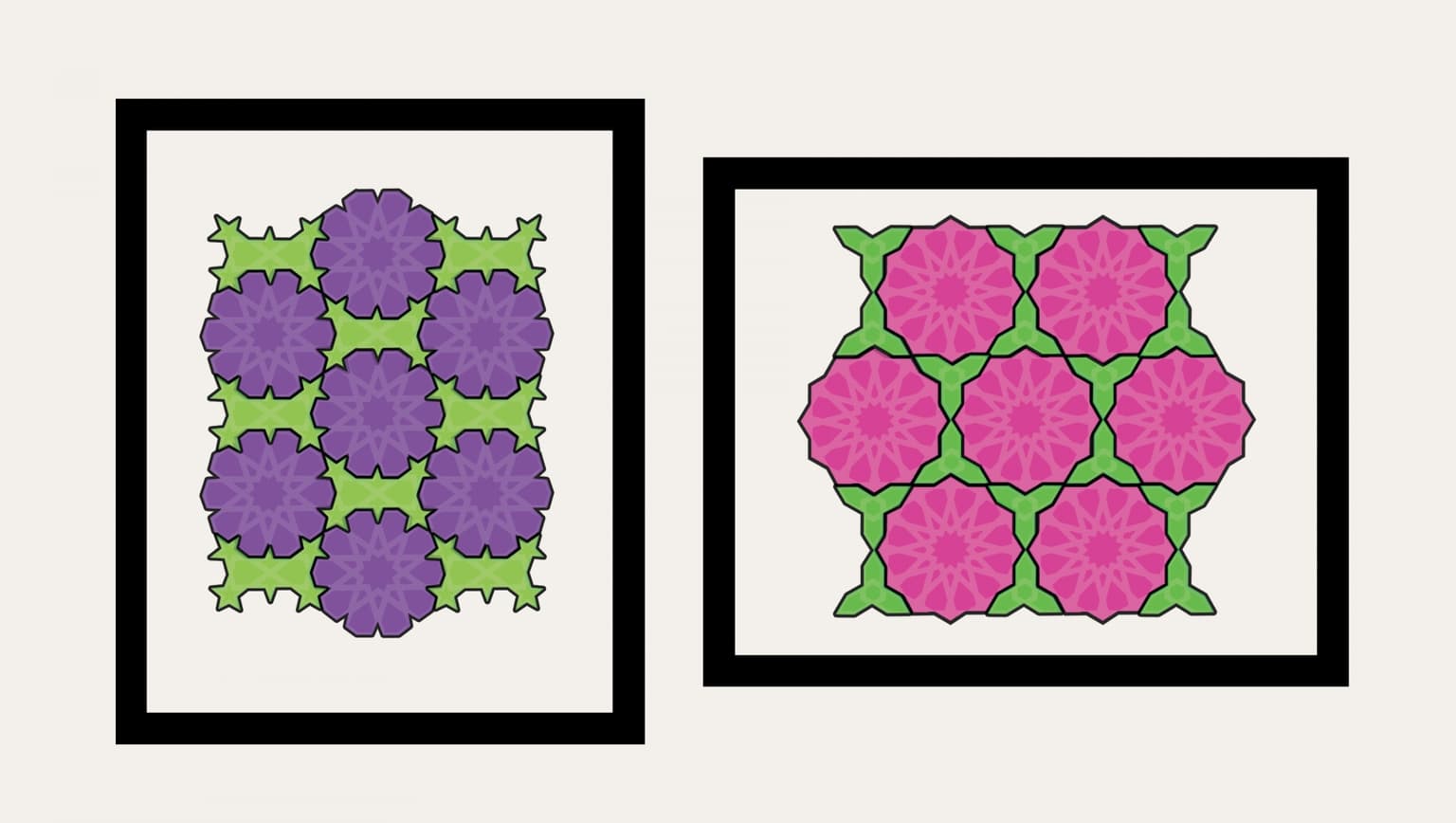Sujan Shrestha, Mona Hajghassem and Haitham Alkhateeb
Artists
Sujan Shrestha
Associate Professor
University of Baltimore
Baltimore, Maryland, USA
Statement
The images are part of series, exploring the Persian designs and patterns of tiling, symmetry, and linear algebra. The decomposition of artful patterns, the curvature of symmetry and the underlying mathematical reasoning may enhance the experience of mathematics education, aesthetic and understanding of a culture.
Artworks

10,3 & 12,4
8 x 13 x 1 cm
digital print
2018
Mathematicians. artists and scientists have long examined the design of tiling and symmetry in various cultures. Our study explored the geometric structure of designs in forming larger symmetric patterns. We used the decomposition process of star polygons in light of linear algebra that are commonly found in Persian designs and patterns in Islamic art. The two art examples were 10-point star polygon (10,3) and Dodecagon, 12-point star polygon (12,4), that are divided into multiple blocks or tiles that are arranged in a 2 by 2 symmetric matrix and are geometrically paired.